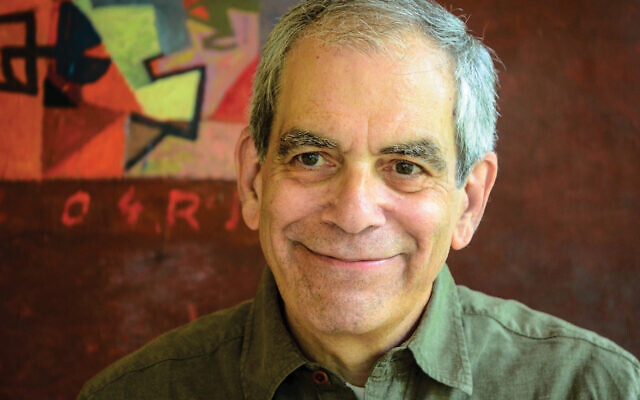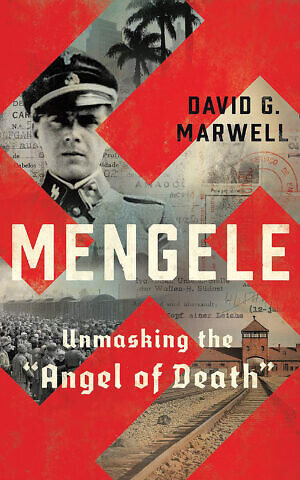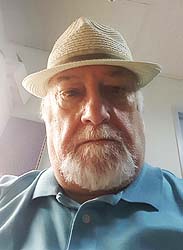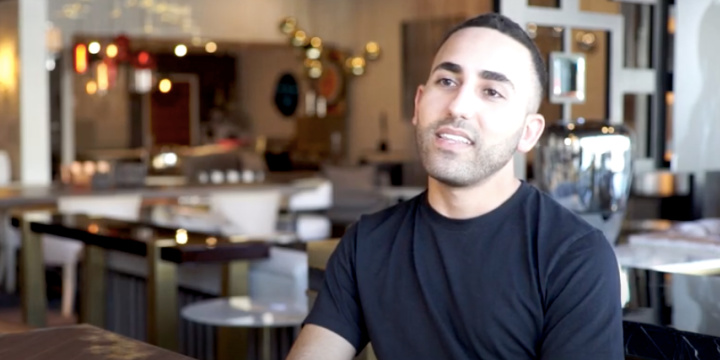 Dżihadyści Al-Szabaab w Cabo Delgado, północnej prowincji Mozambiku, obcinają teraz głowy dzieciom zaledwie 11-letnim. Ta grupa terrorystyczna zabiła ponad 1300 cywilów i wygnała niemal 670 tysięcy ludzi od czasu, kiedy zaczęła taki w kraju w październiku 2017 roku, informuje Departament Stanu USA. Na zdjęciu: obóz 25 de Junio dla uciekinierów w Metuge, gdzie przebywa obecnie 16 tysięcy ludzi z Cabo Delgado, 9 grudnia 2020. (Zdjęcie: Alfredo Zuniga/AFP via Getty Images)
Dżihadyści Al-Szabaab w Cabo Delgado, północnej prowincji Mozambiku, obcinają teraz głowy dzieciom zaledwie 11-letnim. Ta grupa terrorystyczna zabiła ponad 1300 cywilów i wygnała niemal 670 tysięcy ludzi od czasu, kiedy zaczęła taki w kraju w październiku 2017 roku, informuje Departament Stanu USA. Na zdjęciu: obóz 25 de Junio dla uciekinierów w Metuge, gdzie przebywa obecnie 16 tysięcy ludzi z Cabo Delgado, 9 grudnia 2020. (Zdjęcie: Alfredo Zuniga/AFP via Getty Images)
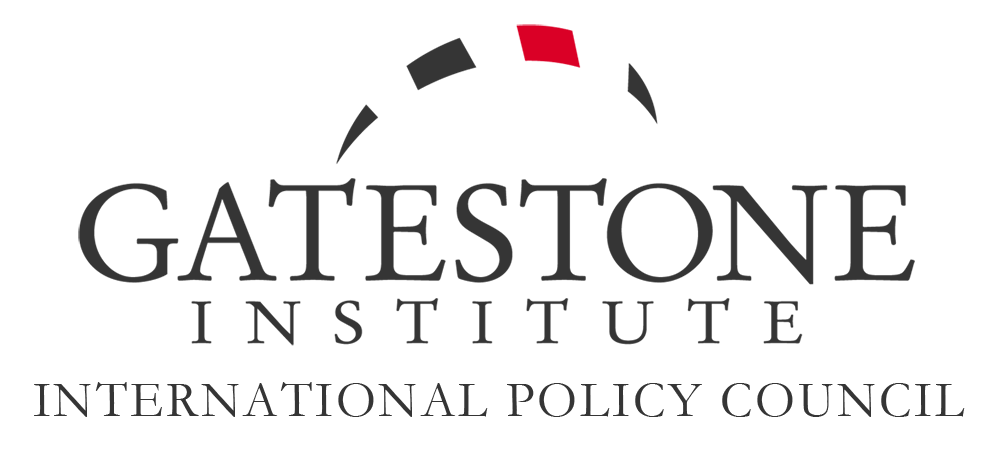
Obcinanie głów dzieciom w Mozambiku
Judith Bergman
Tłumaczenie: Małgorzata Koraszewska
Dżihadyści Al-Szabaab w Cabo Delgado, północnej prowincji Mozambiku, obcinają głowy dzieciom zaledwie 11-letnim. Personel wojskowy i humanitarny pracujący na tym terenie mówi, że nigdy nie widzieli takiej brutalności, jakiej dopuszczają się terroryści w regionie, gdzie ludzie “często są siekani na śmierć i okaleczani maczetami”, jak również są “masowe obcinania głów w stylu Państwa Islamskiego”.
“Ubiegłej nocy zaatakowali naszą wieś i spalili domy. Kiedy zaczęło się to wszystko, byłam w domu z czwórką moich dzieci – jedna z matek opowiedziała organizacji Save the Children. – Próbowaliśmy uciec do lasu, ale złapali mojego najstarszego syna i obcięli mu głowę. Nie mogliśmy niczego zrobić, bo zabiliby nas także”.
“Kiedy zabili mojego 11-letniego syna, zrozumieliśmy, że nie jest bezpiecznie pozostać we wsi – powiedziała inna matka, która musiała uciekać z pozostałą trójką dzieci. – Uciekliśmy do domu mojego ojca w innej wsi, ale kilka dni później zaczęli atakować tam także”.
“Widziałam jak moja córka próbowała dobiec do łodzi z dwojgiem innych dzieci. Zabrali moją córkę i wielu innych. Potem podpalili naszą wieś” – mówiła Fatima Abdul, 43-letnia kobieta, która uciekła i teraz jest bezdomna, śpi na plaży.
Dekapitacje stały się powszechną potwornością w Cabo Delgado, ale ta praktyka nie jest nowa. W listopadzie dżihadyści obcięli głowy 20 chłopcom i mężczyznom w miejscowej wsi. Dżihadyści znani są jako al-Szabaab na tym terenie, ale w odróżnieniu od al-Szabaab, którzy działają w Somalii i są związani z Al-Kaidą, grupa z Mozambiku, znana także jako Ansar al-Sunna, jest związana z Państwem Islamskim (ISIS). Ta grupa terrorystyczna zabiła ponad 1300 cywilów i wygnała niemal 670 tysięcy ludzi od czasu, kiedy zaczęła ataki w kraju w październiku 2017 roku, informuje Departament Stanu USA. Stany Zjednoczone ostatnio uznały tę grupę za grupę globalnego terroryzmu i nałożyły sankcje na jej przywódcę, Abu Jasir Hassana. Podczas gdy Mozambik jest krajem o chrześcijańskiej większości, Cabo Delgado jest głównie muzułmańskie.
W dodatku do skrajnej przemocy “cholera w Cabo Delgado i COVID-19 w całym kraju stanowią olbrzymie wyzwanie dla słabego system opieki zdrowotnej w rejonie, gdzie jest bardzo ograniczony dostęp do wody pitnej, kanalizacji i higieny – według Biura Narodów Zjednoczonych ds. Koordynacji Pomocy Humanitarne. – Ponad 2,7 miliona ludzi w ostatnim kwartale 2020 roku znalazło się w obliczu poważnej niepewności żywnościowej, przynajmniej 840 tysięcy spośród nich w samym regionie Cabo Delgado, Niassa i Nampula”. ONZ ocenia, że Mozambik potrzebuje 254 miliony dolarów, by złagodzić kryzys humanitarny.
Rząd Mozambiku nie był w stanie uporać się z atakami i zatrudnił prywatnych kontrahentów wojskowych (PMC) do pomocy. Była wśród nich Grupa Wagnera, związany z Kremlem PMC, podobno własność Jewgenija Prigożyna, przedsiębiorcy z bliskimi związkami z rosyjskim prezydentem, Władimirem Putinem, oraz południowoafrykańska Dyck Advisory Group. Grupa Wagnera podobno opuściła Mozambik po odniesieniu ciężkich strat.
W raporcie opublikowanym 2 marca, Amnesty International informowała, że wszystkie zaangażowane tam grupy popełniały zbrodnie wojenne. “Ludność Cabo Delgado jest schwytana między siły bezpieczeństwa Mozambiku, prywatne milicje walczące obok sił rządowych i zbrojną grupę opozycyjną, znaną jako Al-Szabaab – z których żadna nie respektuje prawa do życia ani żadnych reguł wojny” – powiedział Deprose Muchena, regionalny dyrektor Amnesty International na Afrykę Wschodnią i Południową. “Wszystkie trzy popełniły zbrodnie wojenne, powodując śmierć setek cywilów. Międzynarodowa społeczność nie zajęła się tym kryzysem, kiedy rozszerzał się do zbrojnego konfliktu na pełną skalę w ciągu ostatnich trzech lat”.
Terrorystyczna rewolta grozi nie tylko Mozambikowi i jego ludności w dodatku do sąsiedniej Tanzanii, która walczy z dżihadystami na granicy; niektórzy analitycy oceniają, że “rewolta w Mozambiku ma potencjał destabilizacji Afryki Południowej i ośmielenia islamistów w całym regionie”.
Al-Szabaab przechwycił szereg miast w Cabo Delgado, ale dokonał znacznie ważniejszego przełomu w sierpniu 2020 roku, kiedy ta grupa podbiła kluczowy port w prowincji, Mocimboa da Praia, w pobliżu rodzącego się przemysłu eksploatacji pól gazowych kraju. Obecnie Mozambik ma podobno trzecie co do wielkości złoża gazu ziemnego w Afryce, po Nigerii i Algieriii.
Rozbudowa tych pól gazowych, która ściągnęła do kraju wielkich zagranicznych inwestorów, wśród nich francuską firmę Total, jest warta, jak się ocenia, 60 miliardów dolarów i rewolta al-Szabaab spowodowała poważne jej zakłócenie. Total prowadzi tam projekt konstrukcyjny warty 20 miliardów dolarów, ale dochodzą informacje, że firma ewakuowała w styczniu około trzy tysiące członków personelu po napadzie terrorystycznym w grudniu na miejsce odległe od projektu o zaledwie kilka kilometrów.
Równocześnie działalność al-Szabaab potencjalnie zagraża globalnej żegludze przez Kanał Mozambicki, przez który przepływa około 30% globalnego ruchu tankowców.
Mozambik szuka pomocy w krajach Zachodu do walki z rozszerzającym się terroryzmem. We wrześniu 2020 roku rząd napisał do Unii Europejskiej prosząc o pomoc w szkoleniu swojej armii, by zapanować nad rewoltą i UE przyznała pomoc z “logistyką szkolenia i technicznego szkolenia w kilku konkretnych dziedzinach, jak również wsparcie w uporaniu się z humanitarnymi problemami, włącznie z opieką medyczną”, ale nie wysłała misji szkolenia wojskowego.
Portugalia, byłe mocarstwo kolonialne w Mozambiku, wysyła około 60 osób personelu do szkolenia żołnierzy piechoty morskiej i komandosów, jak podaje “Politico”. Portugalia, która obecnie sprawuje podlegającą rotacji prezydenturę UE, stara się także przekonać UE, by wysłała wojskową misję szkoleniową, by pomóc rządowi Mozambiku. 15 marca Stany Zjednoczone wraz z rządem Mozambiku rozpoczęły dwumiesięczny, wspólny program szkolenia, w którym siły specjalne USA będą przez dwa miesiące szkoliły żołnierzy piechoty morskiej Mozambiku.
Zawartość publikowanych artykułów i materiałów nie reprezentuje poglądów ani opinii Reunion’68,
ani też webmastera Blogu Reunion’68, chyba ze jest to wyraźnie zaznaczone.
Twoje uwagi, linki, własne artykuły lub wiadomości prześlij na adres:
webmaster@reunion68.com


